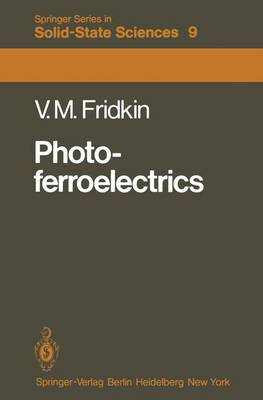Since Valasek's discovery of the ferroelectric properties of Rochelle salt nearly 60 years ago, ferroelectricity has been regarded as one of the tradi- tional branches of dielectric physics. It has had important applications in lattice dynamics, quantum electronics, and nonlinear optics. The study of electron processes in ferroelectrics was begun with VUL's investigations of the ferroelectric properties of barium titanate [1.1]. In- trinsic and extrinsic optical absorption, band structure, conductivity and photoconductivity, carrier mobility. and transport mechanisms were examined in this compound, and in other perovskite ferroelectric semiconductors. An important discovery was that of the highly photosensitive photoconducting ferroelectrics of type AVBVICVIII (e.g. SbSI) by MERZ et al. in 1962 [1.2,3]. A large number of ferroelectric semiconductors (some photosensitive, some not) are now known, including broad-band materials (e.g. lithium niobate, lithium tantalate, barium and strontium niobate, and type-A~B~I compounds), BI and narrow-band semiconductors (e.g. type_AIVB compounds).
A series of improper ferroelectric semiconductors and photosensitive ferroelastics have been discovered, of which Sb 0 I is an example. s 7 Owing to the uncertainty of their band structure, the difficulty in deter- mining the nature of the levels, the complexity of alloying, and their gen- erally low mobility values, ferroelectrics are rarely of interest regarded as nonlinear semiconductors. The most fruitful approach has been the study of the influence of electrons (especially nonequilibrium electrons) and electron excitations on phase transitions and ferroelectric properties. A large group of phenomena have recently been discovered and investigated.
- ISBN10 3642813526
- ISBN13 9783642813528
- Publish Date 1 July 1979
- Publish Status Withdrawn
- Out of Print 18 October 2014
- Publish Country US
- Imprint Springer My Copy UK
- Format Paperback (US Trade)
- Pages 192
- Language English
